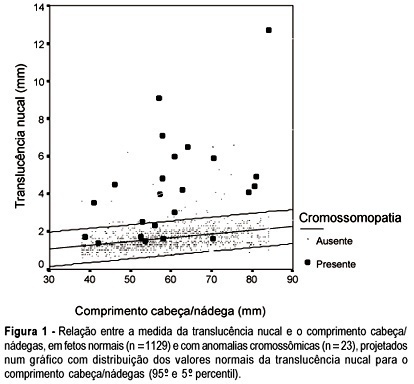Revista Brasileira de Ginecologia e Obstetrícia. 2002;24(3):167-173

Purpose: to study the value of nuchal translucency (NT) measurement in the screening for chromosomal abnormalities at 10-14 weeks of gestation. Methods: a total of 1152 fetuses were studied consecutively. In 124 cases a cytogenetic study was performed on material obtained from a biopsy of the chorionic villus, and in 1028 cases the result was based on the postnatal phenotype. In addition to the routine ultrasonographic examination, all fetuses were submitted to measurement of the NT thickness. For statistical analysis Student’s t test and ANOVA were used. Sensitivity, specificity, positive and negative predictive values, false-positive rate and likelihood ratio were calculated. Results: twenty-three cases of chromosomal abnormalities occurred. Of these abnormal cases, NT measurement was above the 95th percentile in 16 (sensitivity of 69.5%). In the group of normal fetuses (1129 cases), NT measurement was above the 95th percentile in 41 (specificity of 96.3%, positive and negative predictive values of 28.0% and 99.3%, respectively, false-positive rate of 3.7% and likelihood ratio of 19.1). Conclusion: our results suggest that the presence of chromosomal abnormalities may be strongly suspected when there is an increased NT thickness. One can infer that the quantitative NT analysis is sufficient to classify the risk of chromosomal anomalies in the first trimester of the pregnancy. Although the ultrasound operator’s training and skill is still necessary, it is a method of clinical applicability.
Search
Search in:


Comments